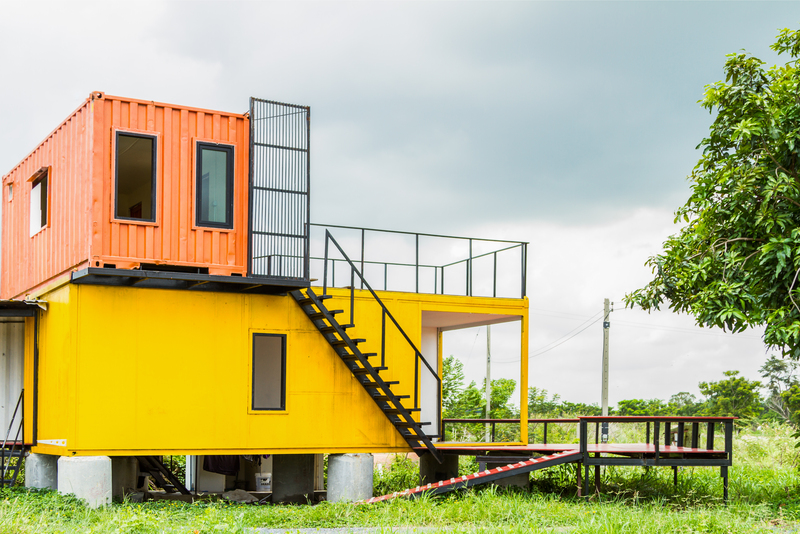Safeguarding the Planet Through Correct PPE Waste Management
Personal Protective Equipment (PPE) has become a vital tool in safeguarding human health worldwide. However, as its usage surges across industries and the general public, the management of PPE waste is increasingly critical for environmental conservation. Mishandling and improper disposal of this waste can have dire consequences for ecosystems and human health. This comprehensive article will explore:
- The importance of correct PPE waste management,
- Strategies and innovation in sustainable disposal,
- The consequences of mismanagement,
- Best practices for individuals, businesses, and local authorities,
- And the evolution of global regulations around PPE waste.

Understanding the Vital Role of PPE
PPE refers to equipment worn to minimize exposure to hazards causing injuries and illnesses. This includes masks, gloves, face shields, gowns, respirators, and more. The COVID-19 pandemic exponentially increased PPE production and consumption, leading to a sharp rise in PPE waste entering the environment.
Why is PPE Waste Management Crucial?
- Environmental Impact: Most PPE is single-use and made from non-biodegradable plastics such as polypropylene, polystyrene, and polyvinyl chloride. If not managed responsibly, these items persist in landfills and eventually leach into oceans and terrestrial habitats, harming flora and fauna.
- Public Health Risks: Improperly disposed PPE can harbor pathogens, contributing to the spread of infectious diseases and endangering waste handlers and the general public.
- Economic Costs: Managing uncontrolled PPE litter increases municipal waste management costs and burdens local governments.
Proactive, sustainable PPE waste management practices are fundamental to minimizing these impacts.
Types of PPE Waste
Understanding the different types of PPE waste is essential for designing effective waste management solutions. These include:
- Medical PPE Waste: Includes masks, gloves, gowns, and shoe covers used in healthcare settings, often contaminated with hazardous materials.
- Industrial PPE Waste: Resulting from construction, chemical, or manufacturing sectors. While not always biologically contaminated, improper disposal can cause environmental harm.
- Community/Public PPE Waste: Worn by individuals in public, such as face coverings and gloves. These often end up as litter in public spaces due to improper habits.
The Rising Challenge of Used PPE Disposal
The World Health Organization estimates that the pandemic generated an additional 87,000 tonnes of PPE waste per month globally. This unprecedented surge presents new challenges for existing waste infrastructure.
Negative Impacts of Inappropriate PPE Waste Disposal
Environmental Degradation
- Plastic Pollution: Most disposable PPE is made from plastic polymers that do not degrade quickly. They fragment into microplastics, which infiltrate water bodies and food chains, posing serious risks to wildlife and humans.
- Marine Life Endangerment: Masks, gloves, and shields often end up in rivers and oceans, where animals mistake them for food, leading to suffocation or ingestion and causing starvation or poisoning.
- Soil and Air Contamination: Incineration or landfill disposal without proper protocols can release hazardous substances and greenhouse gases into the environment.
Public Health Hazards
- Pathogen Spread: Used PPE can be contaminated with bacteria or viruses. Poor handling and open dumping facilitate the transmission of diseases, risking the health of waste workers and communities.
- Blockage of Public Drains and Waterways: Carelessly discarded masks and gloves can clog drains, causing urban flooding and facilitating vector-borne diseases.
Correct PPE waste management is intrinsic to both environmental and public health safety.
Strategies for Responsible PPE Waste Management
1. Segregation at Source
The initial step in safeguarding the planet through proper PPE waste management is the segregation of waste at its source. Color-coded bins and clear labeling can help individuals and institutions distinguish between general waste, recyclable waste, and contaminated PPE.
- Red Bags: For infectious materials.
- Yellow Bags: For contaminated plastic items like PPE.
- Black/Green Bags: For non-hazardous and biodegradable waste.
Segregation simplifies downstream processing and prevents cross-contamination of waste streams.
2. Safe Collection and Handling
Trained personnel using appropriate PPE themselves should collect and handle PPE waste. Pathways must be well-defined to minimize contact with the general public and ensure the safe transport to treatment or disposal facilities.
3. Specialized Treatment Technologies
- Autoclaving: Uses steam sterilization to disinfect PPE material before further processing or disposal.
- Microwave Irradiation: Another disinfection method, environmentally friendlier than incineration.
- Incineration: For highly contaminated waste, though should be used with emission controls to avoid air pollution.
- Mechanical Recycling: For non-infectious PPE made from recyclable plastics, innovative shredding and washing processes can create new materials.
4. Environmentally-Friendly Disposal Solutions
- Landfill Management: Only after all possible disinfection and recycling have been attempted, PPE destined for landfills should be securely contained to minimize leaching and blowing away.
- Encapsulation: Certain PPE waste can be immobilized in cement or polymer matrices prior to landfill disposal, reducing risk of environmental release.
Innovations and Circular Economy for PPE Waste
Emerging Recycling Technologies
- Development of PPE recycling machines that safely shred, wash, and process masks and gloves into reusable plastic pellets.
- Pilot projects that convert recycled PPE into construction materials such as bricks, tiles, and road surfaces.
- Biodegradable alternatives, such as masks and gowns made from bioplastic or plant-based materials, reduce the environmental impact at the source.
Circular Economy Approaches
The circular economy model emphasizes designing out waste and pollution while keeping materials in use. For PPE:
- Designing reusable PPE where safe and practical.
- Facilitating take-back schemes in healthcare, industrial sites, and communities to ensure safe collection and reprocessing of used PPE.
- Encouraging PPE manufacturers to set up stewardship programs for the end-of-life recovery and recycling of their products.
These approaches transform PPE waste from an environmental problem into a resource for new products.
Best Practices for Individuals, Organizations, and Governments
For Individuals
- Always dispose of masks, gloves, and other single-use PPE in designated bins; never litter in public spaces or flush down toilets.
- If possible, switch to reusable PPE (cloth masks, washable gowns) in non-medical settings.
- Educate oneself on local PPE waste disposal guidelines.
For Businesses and Organizations
- Implement clear protocols for PPE disposal, including segregated bins at entry/exit points, signage, and regular staff training.
- Partner with certified waste management services specializing in hazardous and recyclable PPE waste.
- Explore supplier options offering reusable or recyclable PPE products to reduce overall waste.
For Local Governments and Waste Authorities
- Enhance public awareness campaigns about the importance of correct PPE waste management.
- Ensure adequate infrastructure for the segregated collection, transport, and disposal of used PPE.
- Strengthen regulations and offer incentives for research and investment in PPE recycling technologies.
- Collaborate with private and non-profit sectors to innovate community-wide solutions.
Global Regulations and Guidelines for PPE Waste
International agencies such as the World Health Organization (WHO) and the UN Environment Programme (UNEP) have issued guidelines to help countries develop safe PPE waste management systems. Common recommendations include:
- Mandatory segregation and labeling of infectious PPE waste.
- Provision of safe, clearly marked bins in public areas and workplaces.
- Stringent controls on incineration and landfill disposal to minimize environmental release.
Countries have adapted these recommendations based on local conditions, infrastructure, and risk levels. Continuous updates are necessary as research on PPE waste's impact progresses.
Case Studies: Leading by Example
- Singapore: Introduced separate collection systems and rapid scaling of incinerators equipped with emissions control for PPE disposal.
- European Union: Rolled out pilot recycling facilities converting masks into building materials and park benches through public-private partnership.
- Canada: Implemented producer responsibility schemes, making manufacturers responsible for take-back and recovery of used PPE products.

The Path Forward: Educating for Change
Education and awareness are essential to shifting behavior and ensuring correct PPE waste management at every level. Schools, workplaces, and healthcare institutions can:
- Include PPE waste sustainability in curriculum and training sessions.
- Display reminder signage and provide tutorial sessions on correct disposal practices.
- Celebrate and incentivize innovative ideas for repurposing or reducing PPE waste.
Conclusion: Every Piece of PPE Counts
Safeguarding the planet through correct PPE waste management is not merely a matter of compliance; it's a moral imperative in the fight against pollution, disease, and environmental decline. As the world continues to rely on PPE to protect human health, it is paramount that we manage its lifecycle with equal diligence.
From individuals to global institutions, each action - from disposing a single mask correctly to investing in advanced recycling technologies - counts towards a cleaner, healthier planet. By embracing sustainable practices and supporting innovations in PPE waste recycling, we collectively pledge to protect both people and the planet for generations to come.
Let's remember: correct PPE waste management is a cornerstone of environmental stewardship and a legacy we owe to the Earth.
